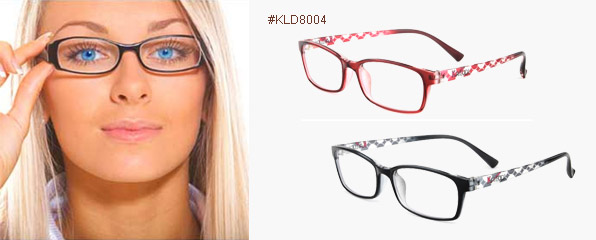The very mention of bifocal eyeglasses brings to mind many debates and discussions. Opinions and perspectives on the product vary with different groups of people, sometimes to the extent of exact opposition. While some are highly and quite reasonably on their turns in favor of bifocal eyeglasses, others might be totally against it. The extremely polarized views on bifocal eyeglasses give a glimpse of a product combining many merits celebrated by followers and just as many defects scrutinized by its critics. Like two sides of the same coin, the pros and cons of bifocal eyeglasses must be taken into serious consideration when one is deciding whether or not to buy.
In comparison to single vision eyeglasses, the biggest advantage bifocals have is convenience. It saves those who suffer from the double harassment of presbyopia and myopia from the nettling troubles of switching between sets of glasses. By blending two different powers into the same lens, bifocal eyeglasses allow the wearer to see things at distance and things up-close by simply tilting their eyes slightly to look through the respective parts of lenses. Such ingenious design for many people is enough to ignore any drawbacks these glasses may otherwise have, since it spares them from their long-lived headaches once and for all.
For others, however, glasses featuring two powers isn’t enough to cover the many defects, among the most commonly complained of which the notorious image jump is. Because the prescription powers on two sides of the separating line are sharply different, wearers often experienced a sudden jump or distortion of image when their vision moves across the line. Such problem is unavoidable with bifocals or trifocals, what have you, but can be spared with progressive lenses. Featuring a gradient of powers progressing from the top to the bottom of lenses, progressive lenses do give more of a natural view as is advertised. However, that doesn’t mean progressive lenses are the ultimate and perfect alternative to bifocals. Wearers of such lenses often find huge areas of blurred vision at two sides of the lenses, which end up offending many and sending them back to bifocals. It seems that we still need to await the ideal solution that solves all problems and comes with not the slightest drawback. As for the time being, we might as well weigh the pros and cons and our particular conditions and make decisions accordingly.
Firmoo Answers:
- Why can't I see out of no line bifocal glasses?
- How much do bifocal glasses cost?
- At what age do you need bifocals?
- Why might older people often need bifocal glasses?
- How much should I expect to pay for bifocal eyeglasses?
- What are pros and cons of bifocal glasses?
- Are there side effects of bifocal glasses?
- Can transition glasses be made with bifocal lenses?
- Glasses to play pool, snooker or billiards with?
- Which one should i choose, bifocal contact lenses or bifocal eyeglasses?












